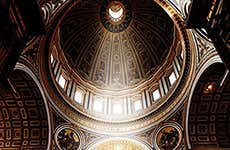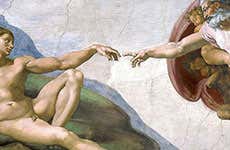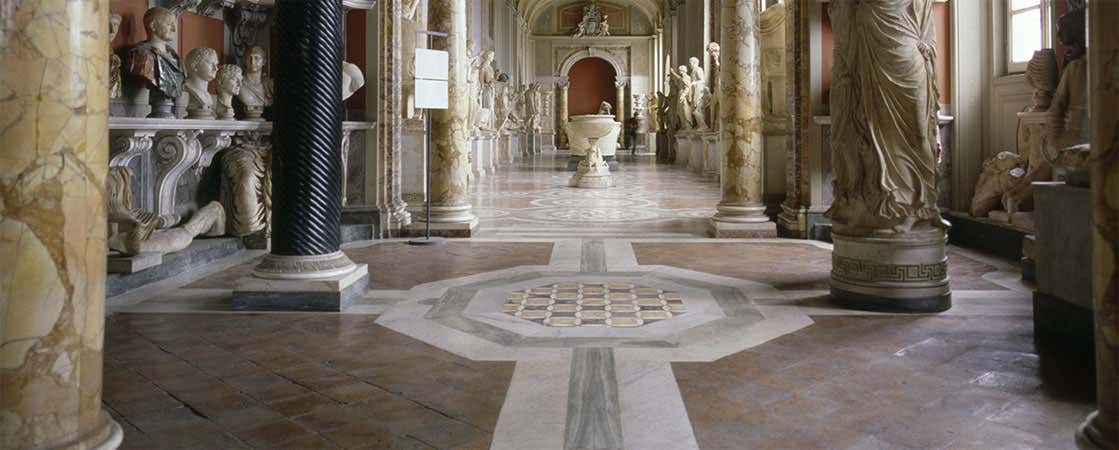
Vatican Museums
With over 6 million annual visitors, the Vatican Museums are one of the most popular attractions in Rome. Established by Pope Julius II during the sixteenth century, it houses thousands of works of art.
The origins of these museums go back to 1503, the year in which the recently named Pope Julius II donated his private collection. Since that moment private families and other popes have enlarged the collection of the museums to the point where it has become one of the largest in the world.
At present, the Vatican Museums receive more than 6 million visitors annually, partly due to the fact that they form the entrance to the Sistine Chapel.
What museums are there in the interior?
- Pio-Clementino Museum: Created thanks to the popes Clement XIV and Pius VI, this museum holds the most important Greek works in the Vatican.
- Apartment of Pius V: The work of Pope Pius V, this museum contains Flemish tapestries from the fifteenth and sixteenth centuries, a collection of medieval ceramics, and another of medieval miniature mosaics.
- Gallery of the Chandeliers: Roman replicas of Greek originals and enormous chandeliers from the second century A.D. decorate this elegant gallery.
- Ethnological Missionary Museum: This museum contains works of art from all the papal missions of the world, among which there are objects originating from Tibet, Indonesia, India, the Far East, Africa, and America.
- Gallery of Maps: Carried out between the years 1580 and 1585, the beautiful maps painted in fresco on the walls of this gallery represent the Italian regions and the possessions of the Church.
- Historical Museum - Carriage Pavilion: In this section, you'll find coaches, saddles, cars, and even Vatican City's first locomotive.
- Gallery of Tapestries: Exhibition of Flemish tapestries created between 1523 and 1534.
- Pio-Christian Museum: The collection of Christian antiquities is composed of statues, sarcophagi, and archaeological ruins from the sixth century.
- Pinacoteca: The eighteen rooms in the Pinacoteca building contain pictorial works dating from the Middle Ages until 1800.
- Sobieski Room and the Room of the Immaculate: In both rooms, you'll find paintings originating in the Italian "Ottocento".
- Egyptian Museum: Among other pieces acquired by the popes you can find some impressive Egyptian sculptures, besides the prized sarcophagi from the third century B.C. There are also some black basalt statues originating from the Villa Adriana, which are replicas of Egyptian models.
- Etruscan museum: This part of the museum contains elements of ceramic, bronze, and gold belonging to the Etruscan civilization.
- Chiaramonti Museum: Created thanks to Pius VII Chiaramonti, this gallery holds thousands of sculptures including portraits of emperors, images of the gods, and some funeral monuments.
- Gregorian Profane Museum: Its rooms hold Greek and Roman sculptures from the first to third centuries A.D.
- Borgia Apartment: The apartments that belonged to Pope Alexander VI Borgia today serve as exhibition rooms for the Collection of Modern Religious Art.
- Raphael Rooms: Rafael and his assistants decorated the apartments of Pope Julius II with unparalleled taste.
- Sala Della Biga: A monumental figure of marble of a chariot drawn by two horses carried out in the first century A.D. fills the space and gives the room its name.
Skip the lines
The queue to enter the Vatican Museums is undoubtedly the longest in Rome. We could say that, of all Europe, the Eiffel Tower is the only monument that can compete with them.
The other way to avoid the lines is to book an English-speaking guided tour of the Vatican. This way you'll see the most interesting landmarks and learn about the fascinating history of the Vatican City, as you follow your guide straight in without having to queue.
If you prefer to visit on your own, we recommend avoiding a visit on the last Sunday of each month (the free day) and during the Easter holiday. It is also advisable to avoid weekends, especially in high season.
In our experience, the best time to go is on weekdays at 1 pm. Most people tend to come first thing in the morning to avoid the lines, so this is often the time when you'll have to wait the longest.
In our experience, the best time to go is around 13:00 on weekdays, as most people tend to crowd in early in the morning to avoid the queues.
You can purchase the Go City: Rome Explore Pass to enter the Vatican Museums, saving time and money on your visit.

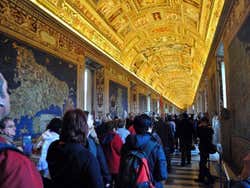
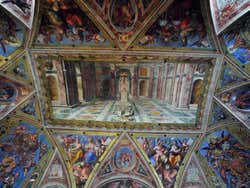
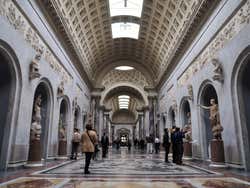
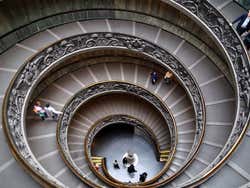
Schedule
Monday to Saturday from 8 am to 20 pm (last admission 6 pm).
Last Sunday of the month from 9 am to 2 pm (last admission 12:30 pm), closed other Sundays.
Closed: 1 and 6 January, 19 March, 21 April, 1 May, 29 June, 14 and 15 August, 1 November, 8, 25 and 26 December.
Price
Adults: € 20 (US$ 23.49) (+€ 5 (US$ 5.87) to reserve)
Children aged 7 – 18 and students under 25: € 8 (US$ 9.39) (+€ 5 (US$ 5.87) to reserve)
Vatican Gardens + Vatican Museums & Sistine Chapel Ticket € 46 (US$ 54.03)
Transport
Metro station: Cipro-Musei Vaticani, line A (orange).
Nearby places
Vatican City (405 m) Sistine Chapel (432 m) St. Peter's Basilica (521 m) St. Peter's Square (584 m) Castel Sant'Angelo (1.1 km)
